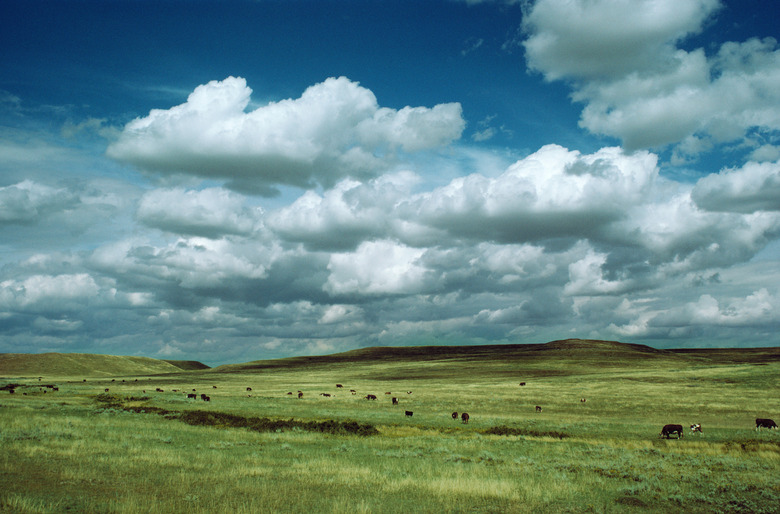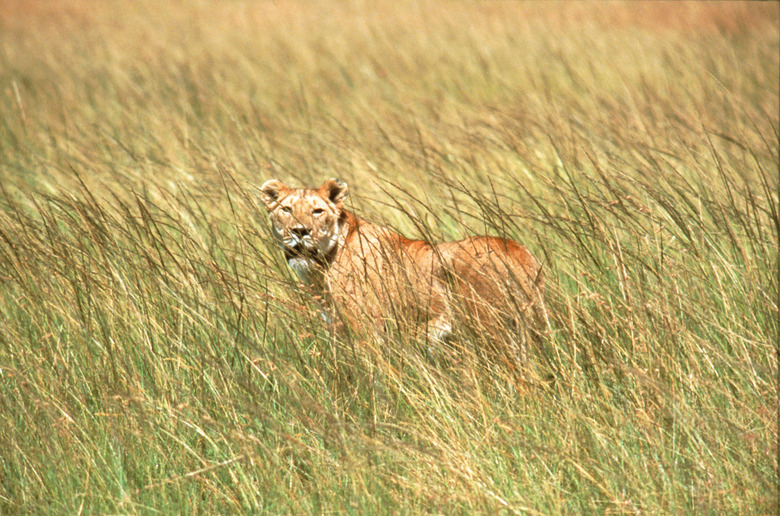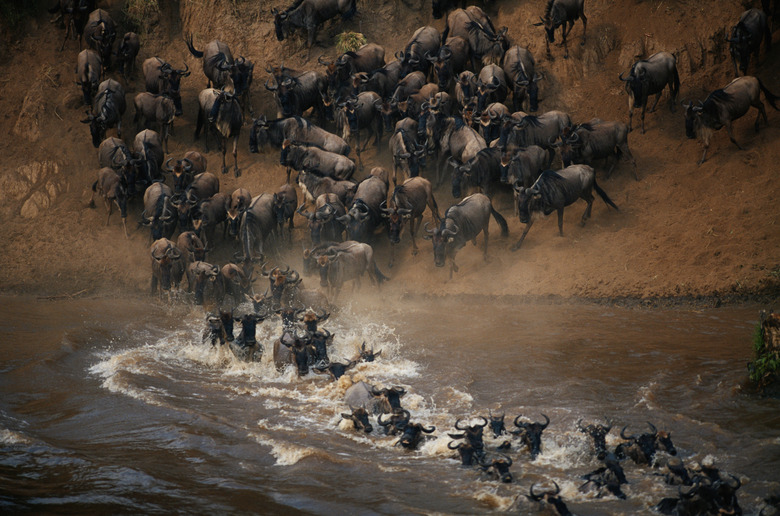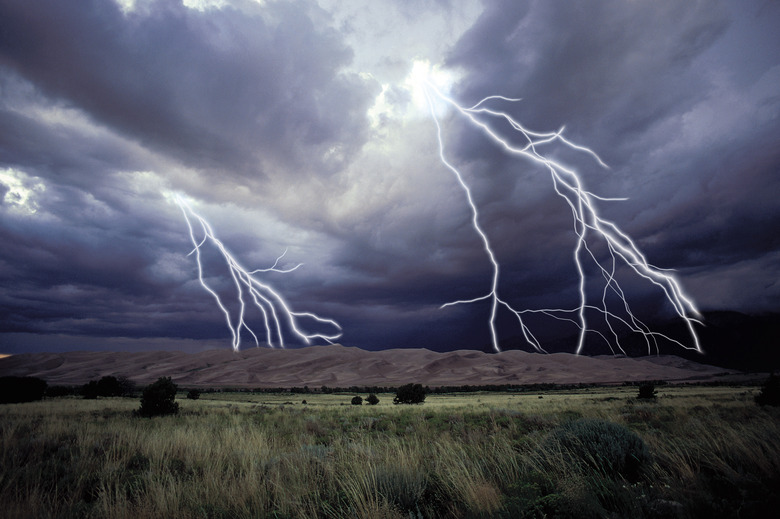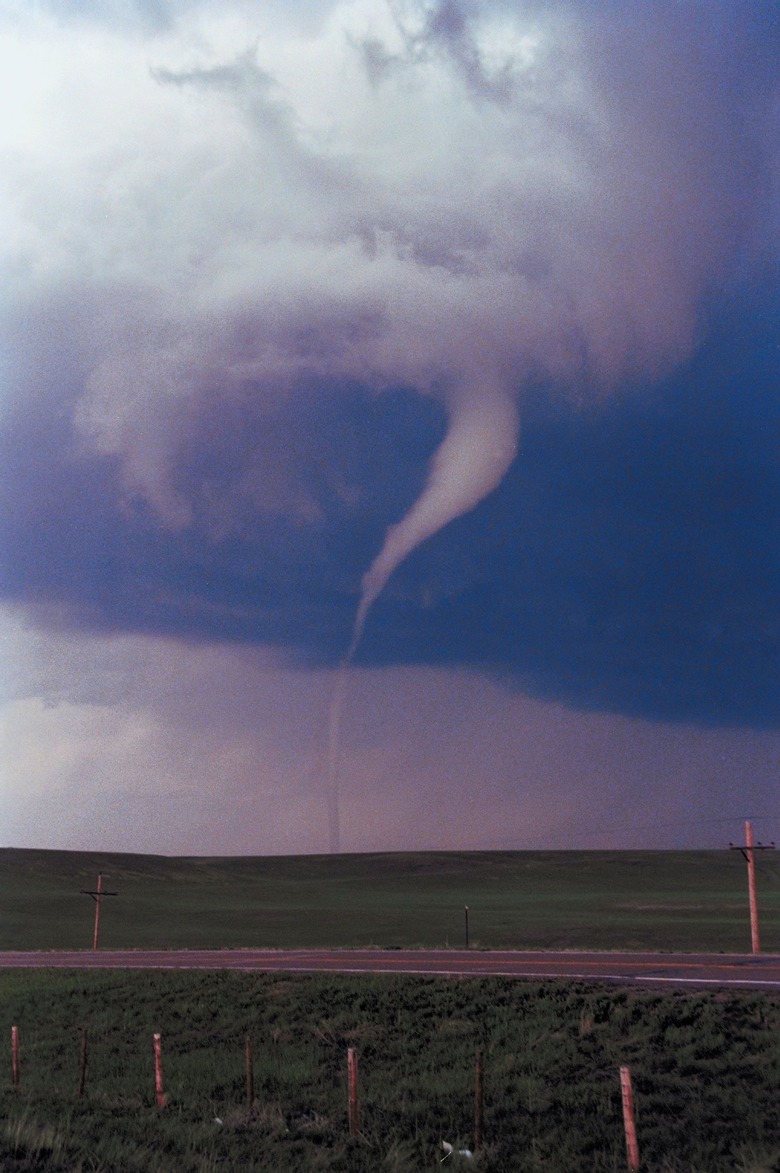Weather Of The Grassland Ecosystem
Whether it's a wet tall-grass prairie in the American Midwest or a tropical savanna of widely spaced trees, grassland ecosystems come in many forms but are everywhere dominated by grasses and forbs instead of woody vegetation. Climate — and the day-to-day weather conditions that define it over time — is a pre-eminent criterion for grassland development: These are landscapes frequently defined by drought and fire.
Grassland Climates
Grassland Climates
Climate — which represents the average long-term weather patterns of a given region — is a more useful environmental variable to consider than day-by-day weather. Geographers divide the world into six major climate types with numerous subtypes. The vastest expanses of grassland occur in tropical-savanna and midlatitude-steppe climate zones, with smaller expanses in subtropical-steppe, humid-continental, subtropical-desert and midlatitude-desert realms. In general, grasslands tend to thrive where they can dominate woody plants such as trees and shrubs. Grasses' dense, shallow root networks are well-adapted to fine-textured soils with some precipitation in the growing season and seasonal dry periods; they persist in the face of wildfire, drought and heavy grazing via root systems and generative shoots shielded by dead outer tissues. Most tropical grasslands experience between 500 and 1,500 millimeters (20 and 60 inches) of rain annually and year-round temperatures between 15 to 35 degrees Celsius (59 to 95 degrees Fahrenheit); the climate of temperate steppe is typically more variable throughout the year.
Seasons
Seasons
Many tropical grasslands experience major fluxes in rainfall during distinct wet and dry seasons, largely due to the migration of the Intertropical Convergence Zone — that rainy belt near the equator where the trade winds merge. Such fluxes are defining environmental factors, spurring, for example, the great yearly migrations of ungulates on the Serengeti and the seasonal flooding of wet grasslands in major marshland complexes such as the Pantanal in central South America, the Okavango Delta in Botswana and the Sudd in South Sudan. In the midlatitudes, the steppes commonly endure a full four seasons, which can be quite intense: Because they are typically situated deep in the interior and often partly blockaded by mountain ranges, these grasslands have a truly continental climate, little moderated by marine influence. In places such as the northern Great Plains or the semi-desert steppe fringing Asia's Gobi Desert, this makes for bitterly cold winters and sweltering summers.
Drought and Fire
Drought and Fire
Drought is an omnipresent reality in most of the world's grasslands; periodic dry periods are, after all, partly what keep steppelands and savanna free of woody vegetation. Years of drought, however, can begin to fundamentally transform a grassland; the line between steppe and true desert can be a fine one. Wildfire is one of the foremost managers of these ecosystems, essential in many areas for periodically clearing away invading tree and shrub saplings. While lightning is the leading natural source of such conflagrations, ecologists suspect many grasslands, such as those of western Oregon's Willamette Valley, were historically partly maintained by indigenous people who set them aflame to preserve openness and attract grazing animals with new growth. In the absence of such fires, Willamette Valley prairies, like those in similar situations worldwide, are crowding in with trees; the ecosystem climatically reverts to forest.
Severe Storms
Severe Storms
The vast expanse of the midlatitude steppe provides a good breeding ground for storms. On the Great Plains and Central Lowlands of North America, cold air swept off the Rocky Mountains and draining in from the north clash with warm, moist Gulf of Mexico systems, creating the ideal nursery for strong thunderstorms and, to a degree found nowhere else on Earth, the gigantic whirlwinds called tornadoes. In winter, blizzards — driven by extratropical cyclones sweeping from the lee of the Rockies — commonly assault the Great Plains, while the fast-moving cold fronts called "Blue Northers" can bring about startlingly abrupt, even dangerous plunges in temperature under fair skies.
References
- Physical Geography: A Landscape Appreciation; Tom L. McKnight
- Vegetation of the Earth and the Ecological Systems of the Geo-biosphere; Heinrich Walter
- University of California Museum of Paleontology: The Grassland Biome
- Encyclopedia Britannica: Grassland
- World Wildlife Fund: Willamette Valley Forests
- Meteorology: Understanding the Atmosphere; Steven A. Ackerman, John A. Knox
Cite This Article
MLA
Shaw, Ethan. "Weather Of The Grassland Ecosystem" sciencing.com, https://www.sciencing.com/weather-grassland-ecosystem-22600/. 24 April 2017.
APA
Shaw, Ethan. (2017, April 24). Weather Of The Grassland Ecosystem. sciencing.com. Retrieved from https://www.sciencing.com/weather-grassland-ecosystem-22600/
Chicago
Shaw, Ethan. Weather Of The Grassland Ecosystem last modified August 30, 2022. https://www.sciencing.com/weather-grassland-ecosystem-22600/
